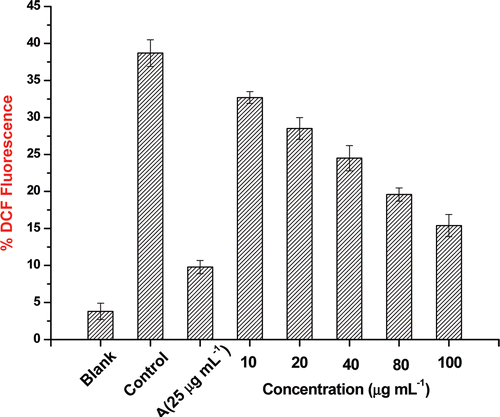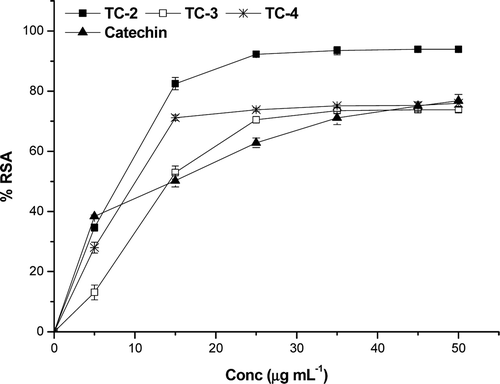Figures & data
Table 1. TPC content and HPLC analysis of individual phenolic compounds in ethyl acetate, methanol and 70% methanol–water extracts of T. chebula.
Table 2. α-glucosidase inhibitory effect and antioxidant activity of different extracts of T. chebula on in vitro models, as expressed (µg mL−1) by inhibitory concentration (IC50). Each value represents the mean ± SD of three replicates.
Figure 1. Dose–response curve for the inhibitory effect of T. chebula extracts on the activity of α-glucosidase.
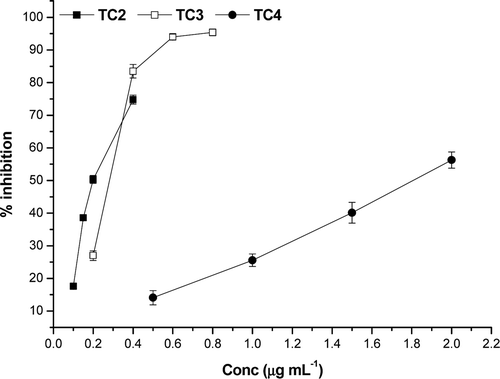
Figure 2. DPPH radical scavenging activity of T. chebula extracts. The values were expressed as ±SD of triplicate measurements.
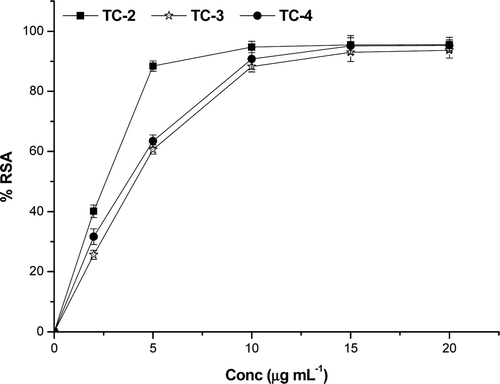
Figure 3. ABTS radical cation decolourization assay of T. chebula extracts along with the reference compounds trolox and ascorbic acid. All values were represented as ± SD of three parallel measurements (p ≤ 0.05).

Figure 5. Effect of TC-2 extract treatment on the intracellular SODs activity in HepG2 cells. Cells were treated with indicated concentrations of the extract for 2 h. Data were expressed as mean ± SD of triplicate experiments.
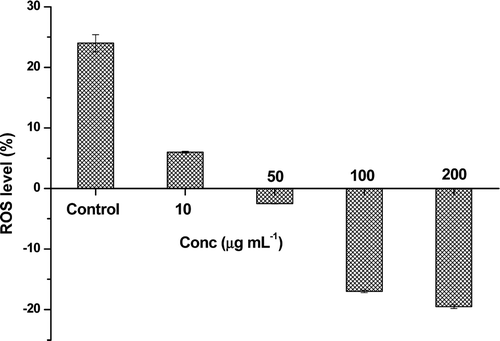
Figure 6. Level of total glutathione S-transferase (GST) after treatment of HepG2 cells with TC-2 extract for 24 h. The results are expressed relative to the control and represent mean values ± SD of GST measurements (n = 3).
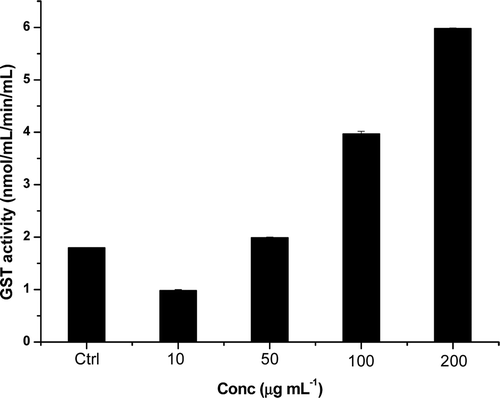
Figure 7. Evaluation of oxidative stress in C2C12 cell lines by flow cytometry. Blank – cells without any treatment; control – cells treated with hydrogen peroxide; A – cells treated with hydrogen peroxide and ascorbic acid (25 µg mL−1); others are cells treated with hydrogen peroxide and different concentrations (10, 20, 40, 80 and 100 µg mL−1) of TC-2 extract. Values are represented as mean value ± SD (n = 3).
